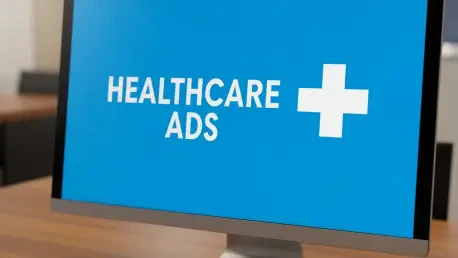Diving into the ever-evolving world of digital marketing, we’re thrilled to sit down with Anastasia Braitsik, a global leader in SEO, content marketing, and data analytics. With her finger on the pulse of industry trends, Anastasia offers unparalleled insight into the recent Google Ads policy change on prescription drug advertising—a shift that’s sending ripples through the healthcare marketing space. In this conversation, we explore the nuances of the new rules, their implications for advertisers across different regions, and the broader impact on the industry, all while unpacking what this means for the future of paid search in healthcare.
How would you describe the core of Google’s new policy on prescription drug terms in advertising, and what’s really changing here?
At its heart, Google’s new policy is about tightening the reins on how prescription drug terms are used in ads, landing pages, and keywords. Starting October 29, advertisers can’t just toss these terms around without oversight. The big change is that targeting these keywords now requires certification, and the rules vary by location. It’s a significant shift from the past when keywords were more of a free-for-all. This is Google’s way of ensuring compliance with local laws and protecting users from potentially misleading or harmful content.
Can you break down how this policy plays out differently across various regions of the world?
Absolutely. In the U.S., Canada, and New Zealand, advertisers can still promote prescription drugs, but only if they comply with local regulations and get certified to target related keywords. Outside these countries, it’s a different story—promotion of prescription drugs is outright banned. The only exception globally is for non-promotional content, like public health announcements or academic research, and even then, certain certified entities might be allowed to target keywords. It’s a patchwork of rules that demands careful attention based on where you’re advertising.
What’s the deal with this certification requirement, and who exactly needs to jump through this hoop?
The certification requirement is a gatekeeper for anyone wanting to target prescription drug-related keywords. This applies to a range of players—online pharmacies, telemedicine providers, and pharmaceutical manufacturers, to name a few. If you’re in the healthcare space and your campaigns rely on these specific terms, you’ve got to get certified through Google’s process. It’s not just a formality; it’s a way to ensure that only legitimate, compliant businesses are reaching audiences with this sensitive content.
How do you think this certification process might affect the day-to-day operations of healthcare advertisers?
It’s going to add layers of complexity, no doubt. For healthcare advertisers, getting certified could mean delays in launching campaigns, especially if they’re not prepared for the documentation or vetting process. There’s also the potential for higher compliance costs—whether it’s hiring specialists to navigate the rules or investing in new tools to monitor keyword usage. On the flip side, it might level the playing field by weeding out less reputable players, but initially, it’s likely to slow things down and increase budgets for many.
There’s been quite a bit of buzz in the industry about this update—can you share your take on the reactions from marketing professionals?
The industry response has been a mix of surprise and frustration. Many marketers are caught off guard by how drastic this shift is, especially since keyword targeting used to be more open. There’s concern about the practicality of it all—how do you avoid triggering these terms with broad or phrase match keywords when Google’s algorithms can pull in related terms unexpectedly? Others find it ironic that past rules were strict on landing page content, yet now, broad match keywords can still slip through approvals. It’s a bit of a head-scratcher for seasoned pros.
What do you believe is driving Google to implement such a strict policy at this particular moment?
I think it’s a combination of factors. User safety is likely a big driver—Google wants to minimize the risk of misleading or harmful ads in a space as sensitive as healthcare. There’s also the legal angle; with varying regulations worldwide, they’re probably aiming to stay ahead of potential lawsuits or government crackdowns. And honestly, it could be about reputation too—being seen as a platform that prioritizes compliance over profit. It’s a proactive move in an era where tech giants are under heavy scrutiny.
In what ways could this policy reshape the landscape for different types of advertisers in the healthcare and legal sectors?
For healthcare marketers, the immediate challenge is compliance—getting certified and ensuring every piece of content aligns with the new rules. It could mean rethinking entire keyword strategies. Legal advertisers, especially those handling mass tort cases tied to pharmaceuticals, might face disruptions since their campaigns often hinge on specific drug terms. However, there’s a silver lining—advertisers who adapt quickly could gain a competitive edge by building trust with Google and audiences through compliance. It’s a hurdle, but also an opportunity.
What’s your forecast for the future of paid search advertising in the healthcare industry given these changes?
I see paid search in healthcare becoming even more regulated and specialized. As platforms like Google tighten control, advertisers will need to invest heavily in compliance expertise and technology to navigate these rules. We might also see a shift toward more educational, non-promotional content as a safer bet for reaching audiences. Long-term, I think this could push innovation in how healthcare messages are delivered—perhaps through alternative channels or formats. It’s going to be a challenging but transformative time for the industry.









